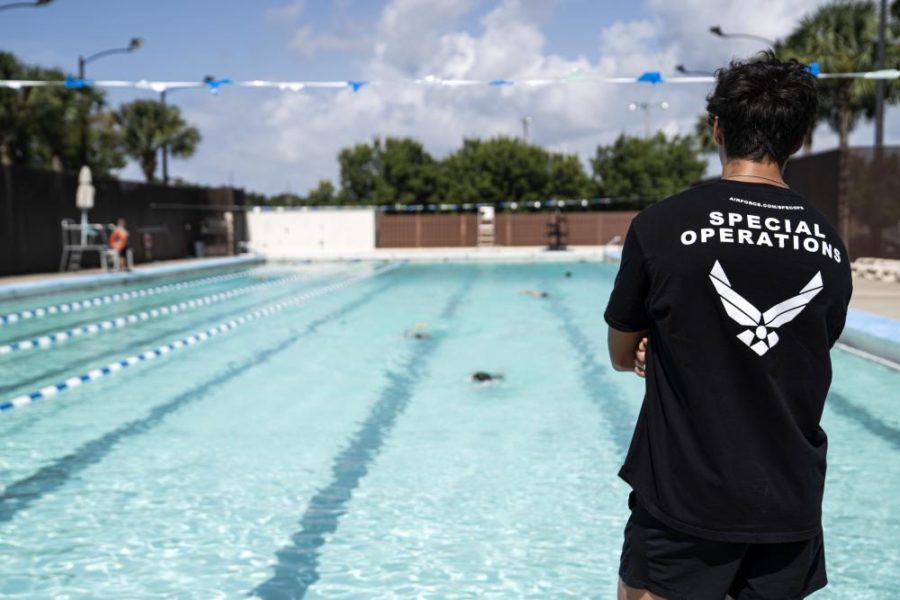The Department of Defense needs to collect and track more data, develop better goals and strategies, and monitor the effectiveness of its plans when it comes to recruiting and retaining service members, the Government Accountability Office said in a report released March 28.
The report comes as recruiters across the military struggle to hit their recruiting goals. Earlier this month, the head of the Air Force Recruiting Service, Maj. Gen. Ed Thomas, said the branch would likely come up 10 percent short of its target for the Active-Duty component this year. Service officials frequently cite challenges such as low unemployment, fewer eligible young Americans, and declining familiarity with military service.
“DOD is facing its most challenging recruitment environment in 50 years,” wrote the GAO, which cited military data showing that only about one in four people in the U.S. between the ages of 17 and 24 are able to meet the education, physical fitness and other standards for military service.
But while there are stiff headwinds, the GAO found that the military can also work smarter towards recruiting and retaining service members. Retention in particular is a boost for both national and fiscal security, as it can take several years and several hundred thousand dollars to train someone in a highly-technical military career field.
GAO’s three general recommendations to track more data, develop better strategies, and monitor their effectiveness were informed by several past studies the office conducted. For example, when the GAO wrote that the Department of Defense “has not collected or tracked sufficient data to help support decisions related to its recruitment and retention efforts,” it pointed to a 2022 study about how the Army and Marine Corps have no clearly-defined active duty service obligations for Soldiers and Marines who complete advanced cyber training, an expensive course for which the military should expect a substantial return on investment, GAO argued.
The Army, Marine Corps, and the Air Force also “do not track staffing data by work role,” in the cyber field, the GAO noted. “As a result, military service officials cannot determine if specific work roles are experiencing staffing gaps.”
In a similar vein, the GAO said the Army, Navy, and Air Force should use data on civilian pay to guide retention bonus decisions for enlisted medical service members.
Beyond insufficient data collection, the military also does not have the right plans, goals, and strategies to guide recruitment and retention efforts, GAO wrote. For example, the office wrote that the Army, Navy and Air Force should develop annual retention goals by skill level for enlisted medical personnel, and the Air Force should analyze staffing levels by officer grade in order to target retention bonuses for particular pilot communities.
The Department of Defense should also give the services guidance on developing plans with clearly-defined goals, performance measures, and timeframes for both recruiting and retaining female service members. While the proportion of women in the active duty military has steadily risen to 17.3 percent as of 2021, women were 28 percent more likely to leave the service than men, GAO found in a 2020 study.
For both men and women, GAO wrote that some of the challenges for recruiting service members include physical fitness, education level, declining interest in the military, medical qualifications, criminal history, and commercial sector job opportunities. One strategy GAO recommended was to update and clarify tattoo policies across the services. Recently the Air Force joined the Space Force in allowing recruits with one-inch tattoos on their hands or neck to join the service.
On the retention side, some of the key challenges GAO found include commercial sector opportunities, dependent care, deployments, family planning, job dissatisfaction, organizational culture, quality of life, and sexual harassment or sexual assault. Though the various services have made efforts in recent years to mitigate some of these challenges, the GAO said the Department of Defense is not positioned to fully monitor the effectiveness of its recruitment and retention efforts.
Among its recommendations, GAO called for the Navy to evaluate the effectiveness of the surface warfare officer career path, training, and policies; for the Air Force to establish a comprehensive metric for tracking remotely-piloted aircraft personnel accession and retention efforts; for the Department of Defense to review its special and incentive pay programs for key principles of effective human capital management, establish measures for efficient resource use, and routinely assess the effect of nonmonetary incentive approaches, such as assignment flexibility and educational opportunities.
Though all of these measures may sound small, incremental improvements are the kind that Thomas and Air Force recruiting officials believe will help the service get through its current recruiting difficulties.
“Much to our disappointment there is not one silver bullet but there are many things that we can do better,” the general said earlier this month at the AFA Warfare Symposium.
Of all the services, the Space Force in particular has shown a keen interest in trying to work with Guardians to overcome work-life challenges such as child care or dual-military spouse work assignments.
“We have to be retention focused,” Chief Master Sergeant of the Space Force Roger Towberman said in his keynote speech at the 2022 Air, Space, and Cyber Conference, noting that there are more steps to request child care in the military than there are to leave the service. “And that means that no one has a reason to quit. It can’t be easier to leave than it is to get help.”
